Technology
Radiometric Profiling for Piping Ultrasonic Thickness for Vessels Compare Common NDT Methods
Non-Destructive Testing - NDT Methods
Compare these common NDT methods so you can choose the most effective testing application for the needs of your company and goals.
Choosing from available NDT methods for testing your system doesn’t have to be difficult – but you should have the facts.
Your company is responsible for the reliable operation and maintenance of a complex piping system. To support this, non destructive testing methods are employed to satisfy regulations, facility requirements, and to investigate areas of concern in your system.
The right method can be an excellent solution for increasing efficiency and cutting costs while supporting your goals. Due to ndt equipment and service limitations, many can also fall short. Examining the NDT options for pipe testing will ensure you and/or your contractor or consultant are able to make the best choice while considering efficiency, effectiveness and scope.
While there are hundreds of non destructive testing methods, over the years, the capabilities of each have narrowed down a handful as the most commonly used today. The following is designed to provide you with a meaningful comparison across these relevant NDT methods.
Primary differences between common non destructive testing methods.
Slide the scroll bar left to right in each of the scenarios below for a cursory view of the range of capabilities between common NDT methods.
1
NDT methods vary in their ability to access everything you need tested.
Piping degrades as it relates to its function, temp, contents, coating, insulation, etc. – not because of where it is located in the system. Be sure piping that isn’t being tested in your system is for good reason, not because the technology isn’t capable of testing it based on piping size, location or configuration.
Slide the scroll bar left to right to reveal the vast difference in capabilities between 2 technologies. Each aerial image depicts the pipe that can be tested with each NDT method in blue. NDT method 1 is capable of testing all piping in the image; NDT method 2 cannot access nested piping. This inaccessible piping will not get tested, leaving the health of a vast amount of piping in this system ‘unknown’.
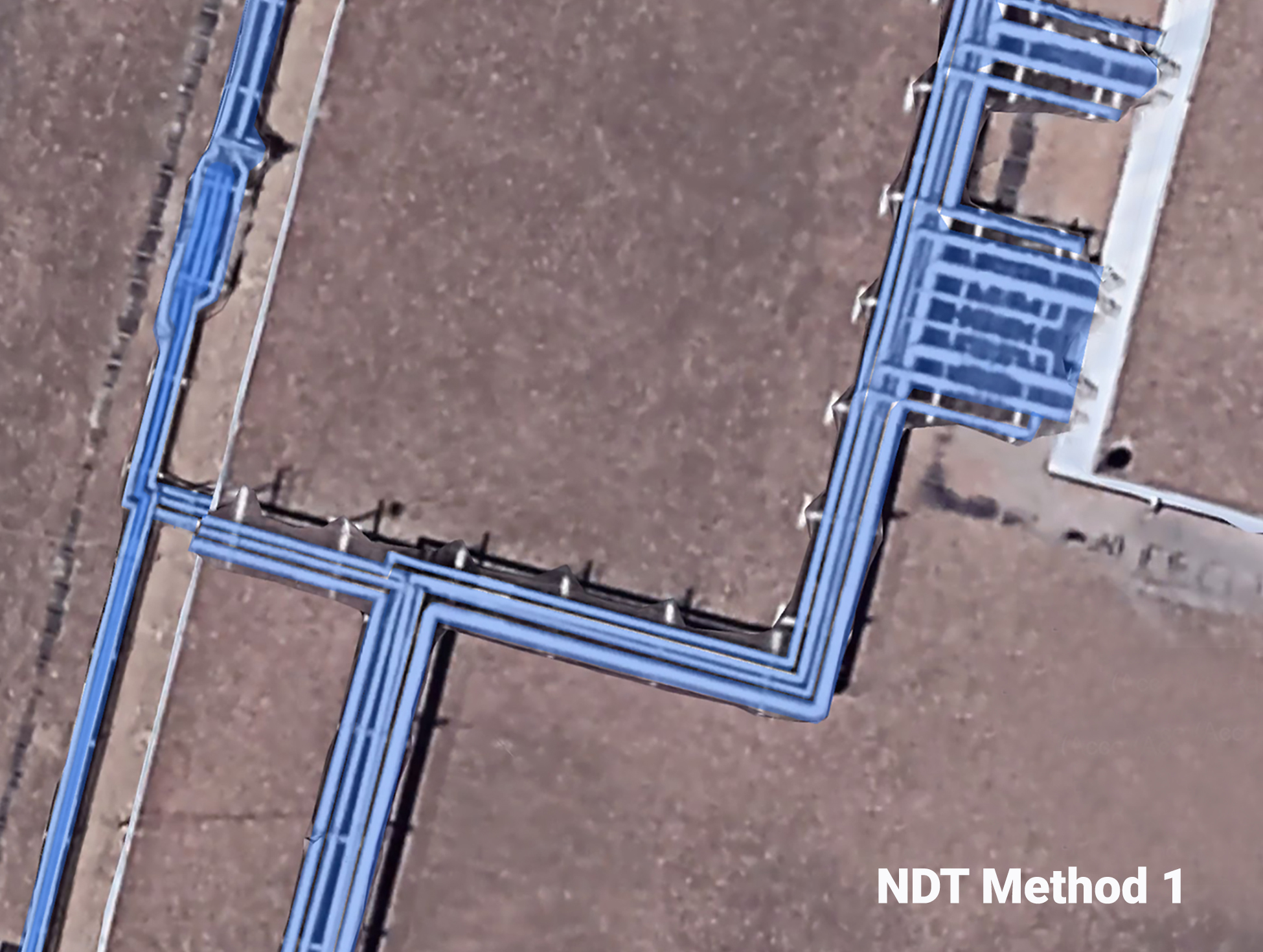
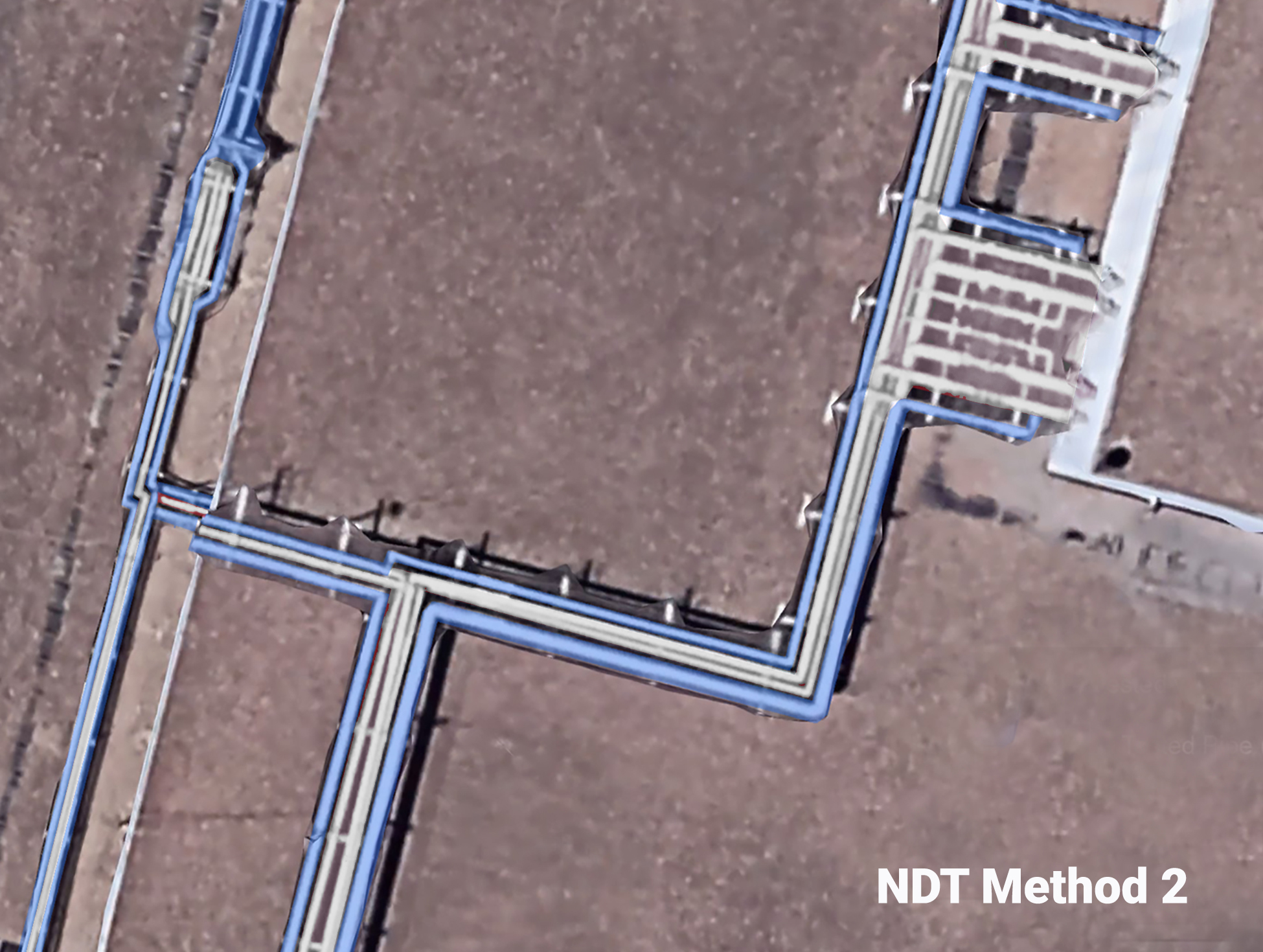
2
NDT methods vary in speed and efficiency.
Each NDT method has different application requirements and thus the time it takes to test each individual location on piping ranges from a few minutes to twenty. This impacts the number of locations tested in your system in a given day, which affects cost and the thoroughness of testing.
Slide the scroll bar left to right to reveal the vast difference in capabilities between 2 technologies. Each aerial image depicts the number of testing locations that would typically be tested with blue dots. NDT method 1 is capable of testing the marked locations in one half-day; while NDT method 2 is capable of testing the marked locations in a full day.
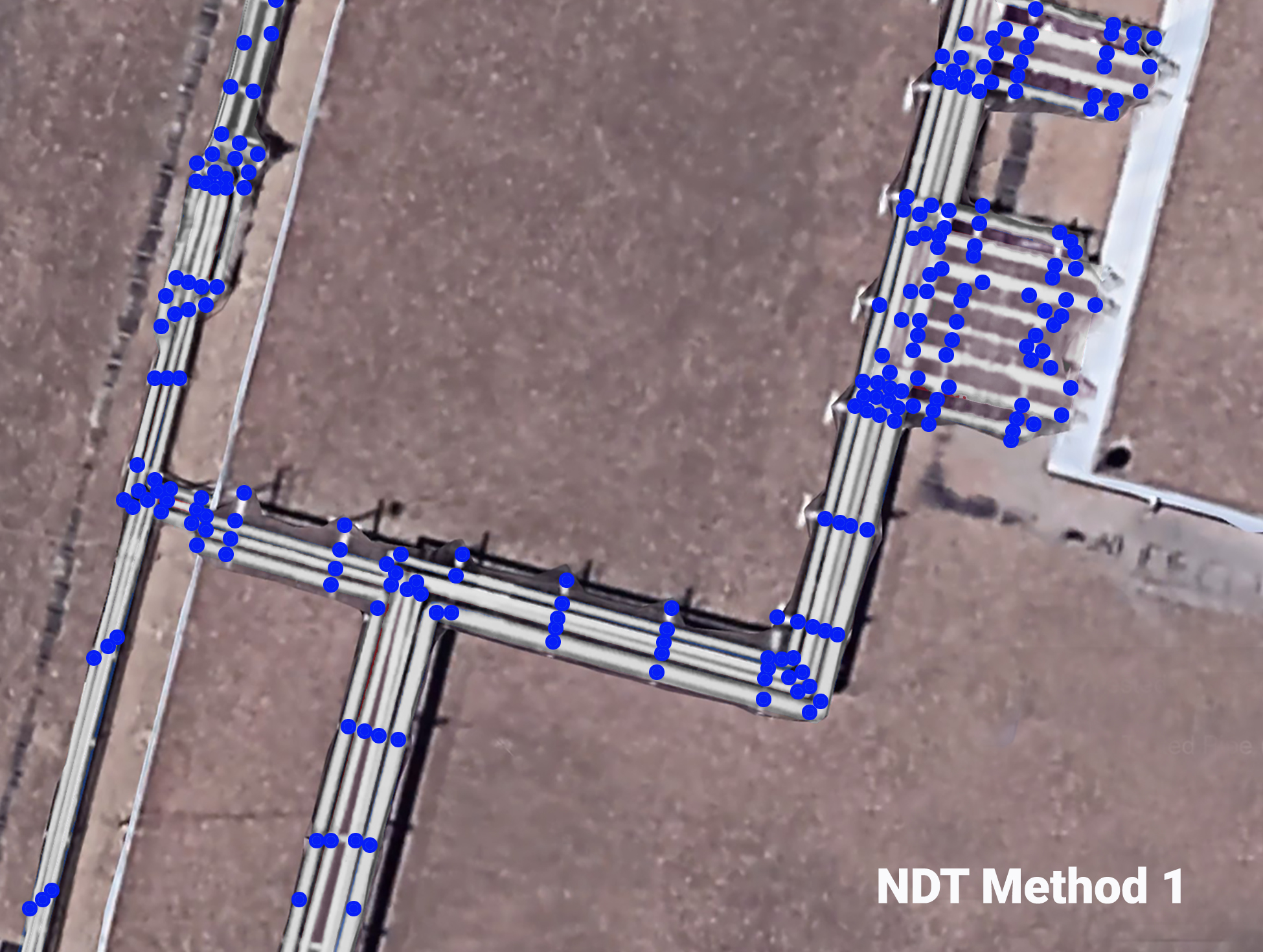
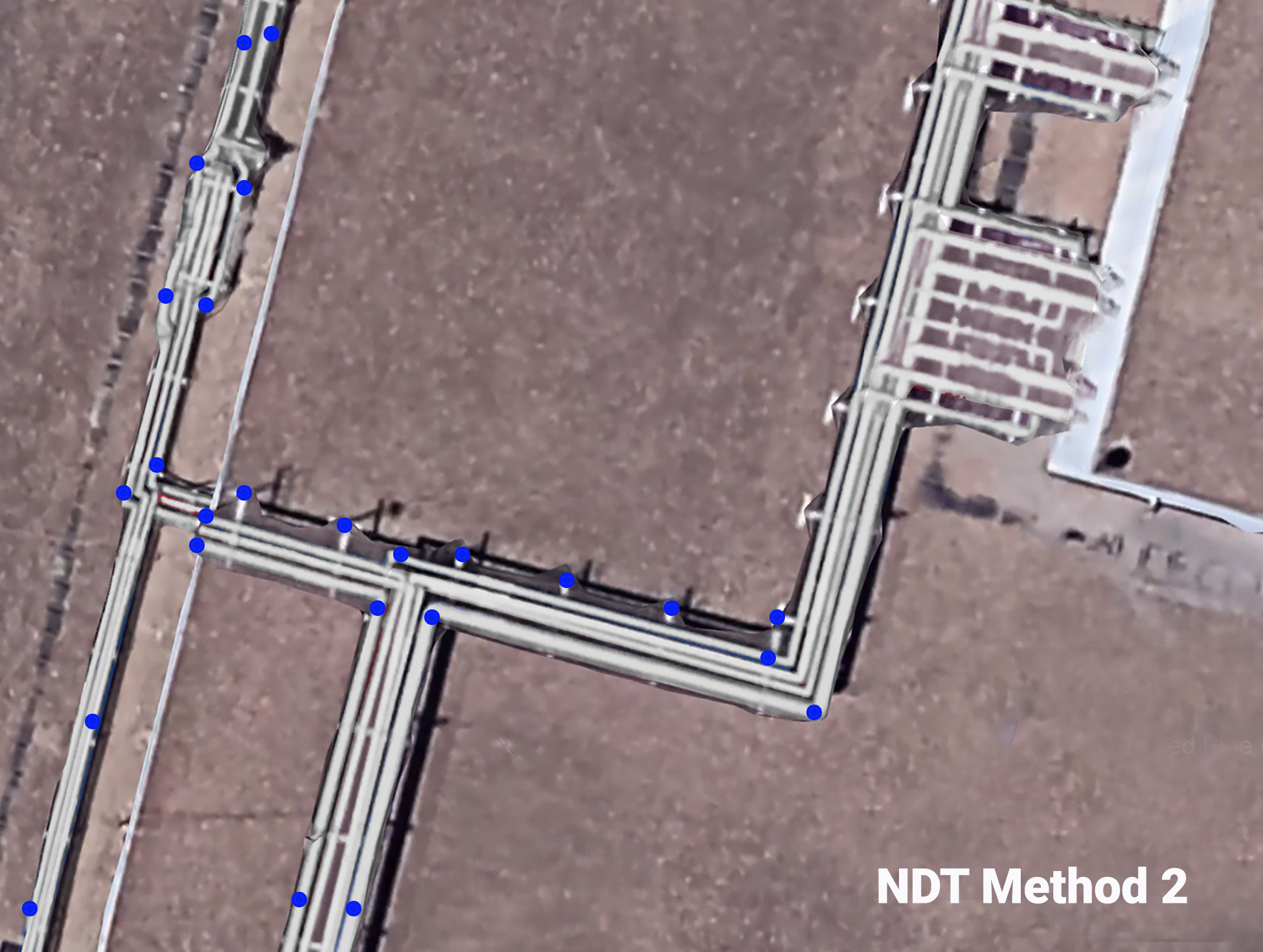
3
NDT methods vary in their ability to find and measure the conditions of your piping.
Conditions of piping are often concealed, either because of insulation or the condition exists inside the pipe. Applying NDT to determine the state of your piping is important for mechanical integrity and the health of the process. Technologies that are unable to find and provide important metrics for early detection and preventative measures for maintenance result in incomplete testing and can jeopardize safety and compliance.
Slide the scroll bar left to right to reveal the vast difference in capabilities between 2 technologies. Each image depicts the conditions found and/or measured in this section of a piping system. NDT method 1 is capable of detecting these conditions on insulated and uninsulated piping at tested locations; while NDT method 2 is capable of detecting only these conditions on uninsulated piping or where insulation has been removed at tested locations.

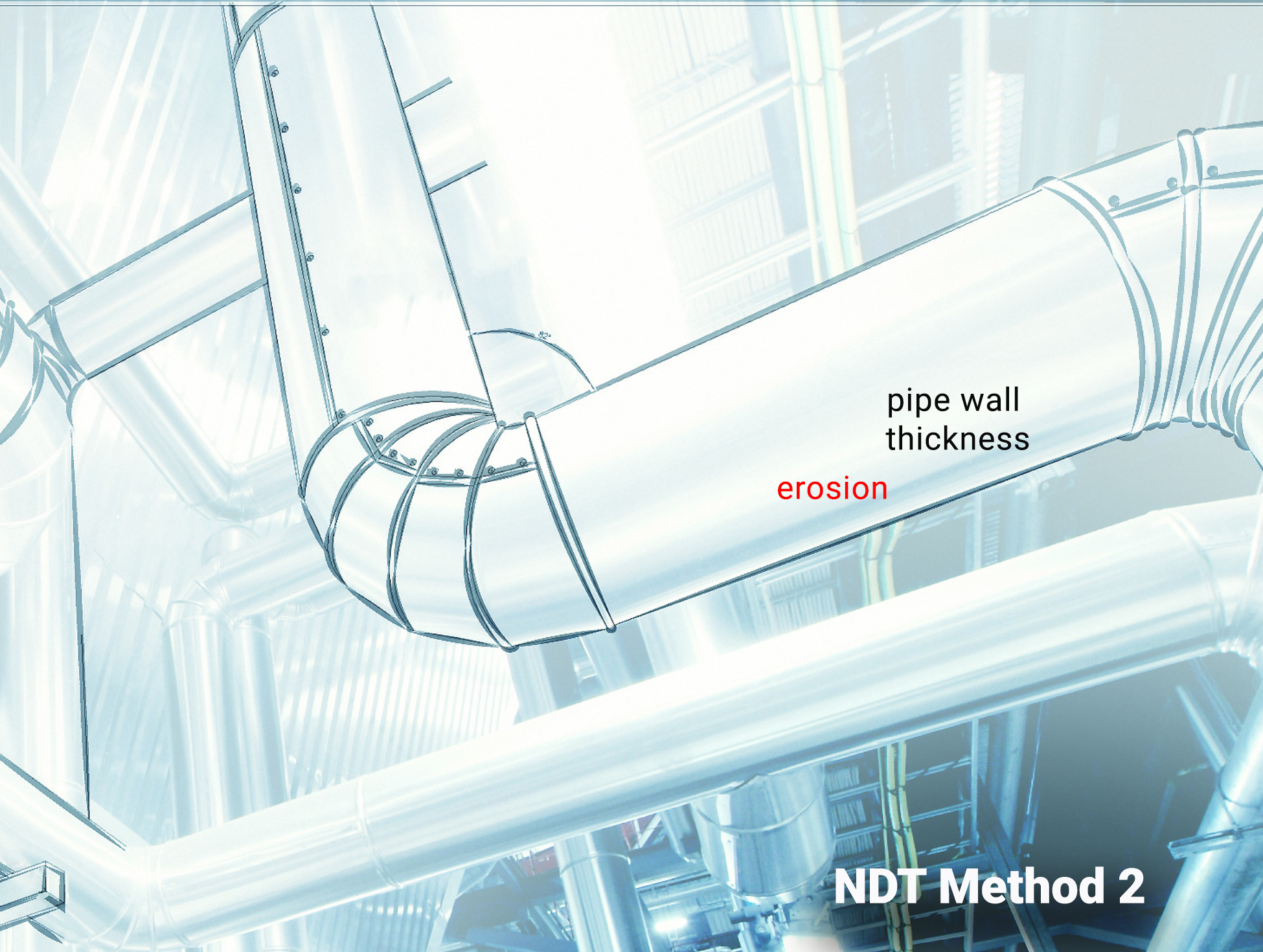
Compare common non destructive testing methods.
Learn about the capabilities of non destructive testing methods commonly applied on in-service process piping and vessels. GGS employs Radiometric Profiling (RP), for our customers’ industrial piping system evaluations, and Ultrasonic Thickness Testing (UT) for vessels.
Visual Inspection
Visual inspection is the evaluation and assessment of equipment, a component, a system, or a portion of a system using human senses such as vision, hearing, touch, smell, or a combination thereof. While visual inspection is non destructive, it is qualitative, and differentiated from testing.
Testing is a procedure that commonly employs instruments, devices, and/or gauges to determine the operational status of equipment, a component, or a device in the system. In addition to employing full-system integrity testing, NDT is often also employed to provide quantitative (definitive) metrics on areas identified as suspect by a visual inspection. Inspection and testing should be performed by two different parties.
